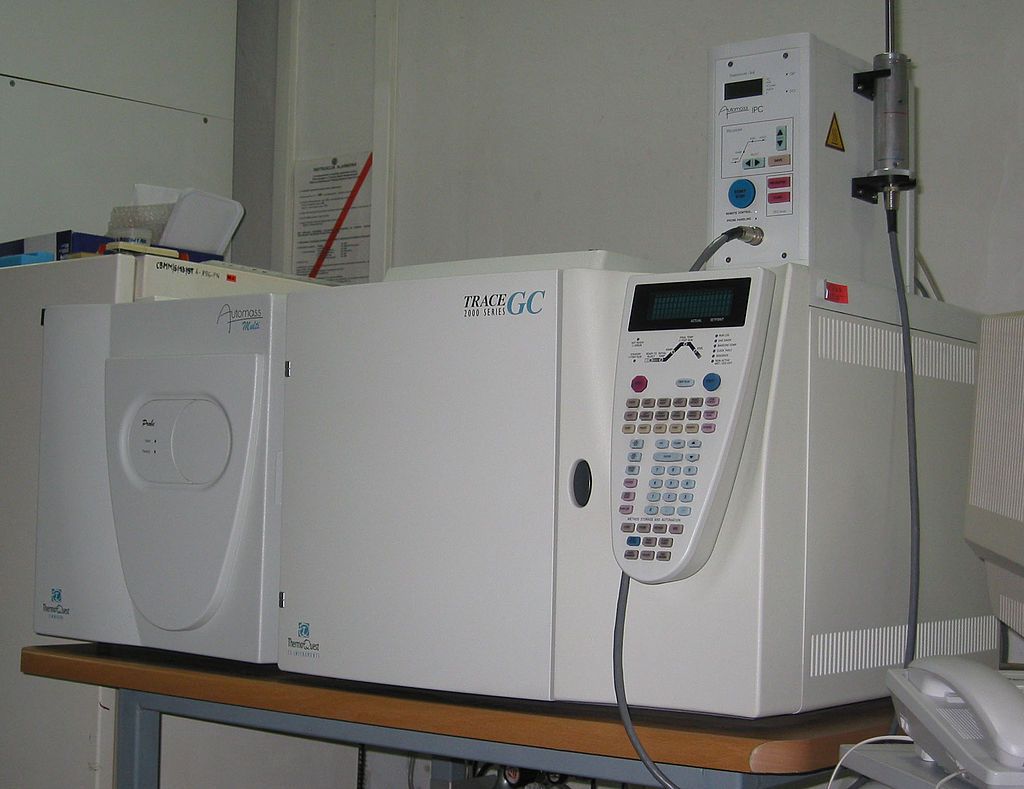What is Chromatography?

Chromatography (Latin for the study of color) is the process by which a substance can be separated into individual parts for analysis. In traditional chromatography, a slip of paper is suspended in a solution of water and methanol. The substance to be examined is placed on the bottom of the paper. As the capillary effect draws the water-methanol solution up the length of the paper, the substance being studied is also drawn up.
Since different components of the mystery substance have different amounts of chemical attraction, they will tend to stratify out at various points along the length of the paper. The components of the substance that are most prone to bonding with paper fibers will drop out of the solution earlier and collect lower down on the paper. Those parts of the mystery compound that are least likely to bond will gather at the top of the paper. This process could be used to determine pigment concentration in various dyes. If you'd like to try this on your own, I've found a kit on Amazon.
But what if we want to use this concept for something more modern?

Gas chromatography uses the same idea but in a much more helpful way. Instead of a water-menthol solution, we use a carrier gas such as helium.
Instead of placing the mystery substance on paper, we vaporize it and let it pass into the carrier gas stream. Finally, instead of observing the bonding of our mystery substance to a piece of paper, we collect it in either a liquid or solid placed along the gas stream.
The location of the deposits of our vaporized substance along the carrier stream is similar to the old-style location on our chromatography paper. Particular chemicals in the mystery substance will tend to congregate around the same areas. These can be tracked with a detector and plotted for easy reading. Each chemical deposit zone can be classified with chemical analysis such as spectrography. In this way, we can determine the chemical composition of unknown compounds.





Member discussion